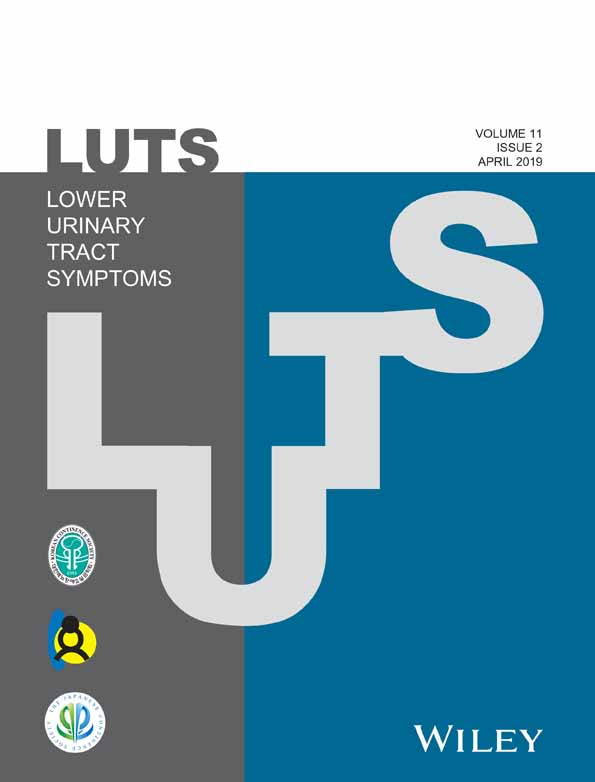Urethral function and histopathology in aged female rats as a stress urinary incontinence model
Abstract
Objective
Stress urinary incontinence (SUI) is a common disease condition in elderly women, suggesting that its etiology may be linked to aging. To investigate the hypothesis that urethral dysfunction and histopathological changes are possible contributors to SUI in elderly women, several parameters of urethral function, as well as histological parameters, were compared between young and aged rats.
Methods
Virgin female rats were examined at 3 different ages, namely 3, 12, and 24 months, corresponding to young, middle-aged, and aged rats, respectively. Urethral function was assessed by measuring the leak point pressure (LPP), pudendal nerve stimulation (PNS)-induced elevation in urethral pressure, and phenylephrine-induced increase in urethral perfusion pressure (UPP). Histopathological assessments were performed following hematoxylin and eosin (HE), Masson's trichrome, and immunofluorescence staining of urethral tissue.
Results
LPP of aged rats was significantly reduced compared to that of both young and middle-aged rats. PNS-induced elevation in urethral pressure in aged rats was also significantly lower than that in young rats. In contrast, there were no significant differences in the phenylephrine-induced increase in UPP between young and aged rats. Connective tissue area in the external urethral sphincter (EUS) layer was increased in aged rats, whereas the smooth muscle layer was histologically similar to that in young rats. The number of EUS fibers was significantly reduced in aged rats, whereas the cross-sectional area of EUS fibers increased from differed compared with young rats.
Conclusion
We have demonstrated age-related changes in EUS function and morphology in the rat urethra, which are considered to be etiological risk factors for SUI in humans.




